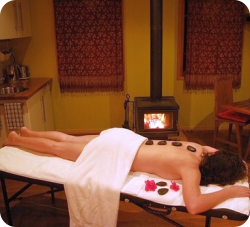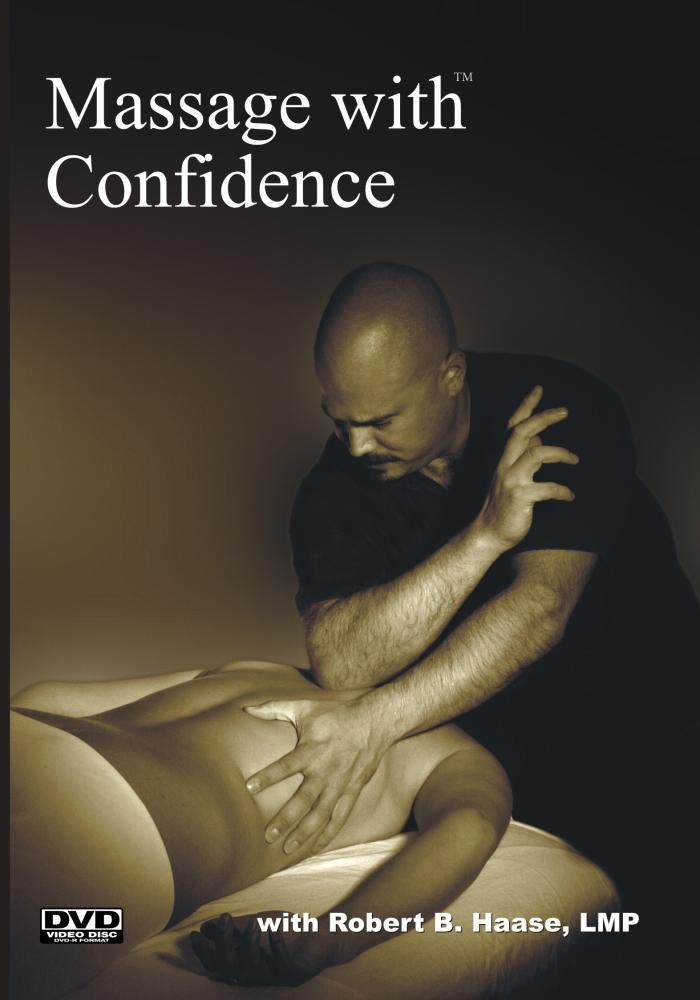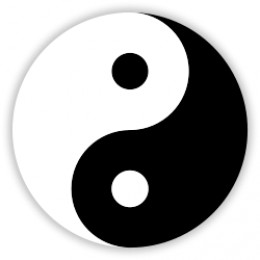A massage type, or a modality, as the specialists refer to, is a set of specific massage techniques, manoeuvers, and specialized tissue and body manipulations, that make a massage practice, differentiate from other massage types.
Massage Techniques vs Massage Modalities?
Massage therapy is one of the oldest healing practices in the world. It developed differently in various regions of the world according to social environment, cultural realities and the desired outcome.
A massage type, or a massage modality, as the specialists refer to it, is a set of specific massage techniques, maneuvers, and specialized manipulations that make a massage modality unique, and differentiates it from other massage types.
The term “massage techniques” refers to certain massage maneuvers, with a specific targeted outcome, or focusing on a certain layer of tissue. Massage techniques can be common to many massage modalities.
Depending of the obtained outcome, massage modalities can be therapeutic, (remedial massage), or recreational, (relaxation massage).
Each massage method is unique and it has its own advantages and its own perspective over healing process. That doesn’t make one method better than another. Any of these forms of massage are called “Massage Modalities”, or massage types, or very often but incorrectly, massage techniques.
Swedish Massage
History of Swedish Massage
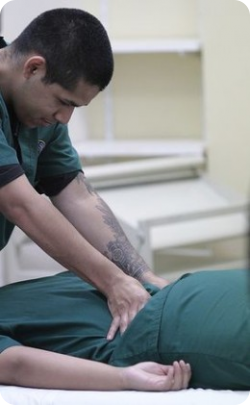 Swedish Massage is the basis of all modern massage therapy variations. It is often called Classic Massage. Swedish massage is the traditional western style massage therapy, is the reference point for all other western massage therapies. Most of the people who are getting a massage are getting a Swedish Massage.
Swedish Massage is the basis of all modern massage therapy variations. It is often called Classic Massage. Swedish massage is the traditional western style massage therapy, is the reference point for all other western massage therapies. Most of the people who are getting a massage are getting a Swedish Massage.
The history attributes the creation of the Swedish Massage to Henri Peter Ling. However other sources attribute this to the Dutch practitioner Johan Georg Mezger.
The Specifics of Swedish Massage
This massage type, can be described as dynamic, though relaxing and its primary purpose is to relax the muscles. Its particularity is that it combines gentle moves and force during the same session for best results. The principle is simple: the therapist uses oil, cream or lotion to facilitate more fluid movements along the body and muscles. There are five basic types of movements that can be used during a Swedish massage session. These are effleurage, kneading, friction, tapotement and vibration.
In a Swedish massage session, the body is caressed with long strokes, shaken by sometimes firm enough movements, tapped with percussions and heated with friction, to increase the circulation and, therefore, to increase the flow of oxygen in the blood. Relaxed, the muscles release toxins. Increases the number of red blood cells in the blood and intercellular exchanges are greatly enhanced. The body is stimulated and the spirit is calmed. Swedish massage is done with the person covered by a sheet or a blanket. The part of the body that is worked is uncovered, and then covered up, to move on to another part of the body. This technique keeps the proper body temperature for a full relaxation. The objective of a Swedish massage session is to relax the entire body, improve blood circulation, and relax the muscles. This is accomplished by using a set of massage strokes designed to push the blood and lymph into their vessels. The most used technique is the effleurage, which consists of long gliding strokes pushing the blood to the heart. Some other techniques in the Swedish Massage include nerve strokes, friction, (circular pressure applied by the hands and palms), petrissage, (firm kneading in various forms), tapotement, (percussion-like tapping), bending, stretching and vibrations.
This massage type promotes healing, and it is benefiting the subject in many ways. It stimulates the skin’s health and regeneration. The nervous system is targeted, and Swedish massage calms down nerves. The tensions are eliminated, and the relaxation is total. From a health point of view, the Swedish massage is known for its anti-stress properties. It may also be indicated for chronic back pain because it relieves body aches, whatever their origin.
Swedish massage is the foundation for other types of Western massage, including sports, deep tissue, aromatherapy, and Californian.
Learn Swedish Massage Video
The DVD explains massage techniques for a Swedish massage session. The techniques are for all levels, from beginner to advanced, and the best thing, it is really a DVD for learning massage. Unlike many of the massage DVDs on the market, it is not targeted for couple’s massage, but focuses rather on the therapeutic intent. It is in fact a great start for any massage type, or modality.
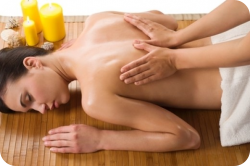
Californian massage
For many people, the prospect of getting a massage is not always synonymous with pleasure. Classical massage is conceived as a therapeutic device. Therapeutic massage stimulates blood circulation while acting on the muscles, tendons, and ligaments. During a deep tissue massage, or any other therapeutic or medical massage, you will feel an important amount of pain, partly due to the stress of daily life, partly due to vigorous maneuvers. Californian massage offers an alternative to this treatment style, which is effective but rather physical.
Californian massage – Description
The Californian version of massage takes into account the emotional dimension of the individual and allows him or her to reconnect with himself. Californian massage has an integrative view about health. The health and well-being are at the center of this type of massage. The person massaged is relaxed and the session is carried on with plenty of massage oil. The movements are long, fluid, and slower than in a classical massage, and invite the patients to discover parts of their body that they are not used to acknowledge. The quality of the skin contact is a feature of this caressing technique, and it is executed smoothly. The gentleness of the strokes, combined with a real communication between the care provider and the subject, enable the positive effects on the mind of the patient. It is not only to heal the body, but the spirit. Indeed, this eternal body-soul pairing is inseparable on the road to wellness.
A Session of Californian Massage
Each session lasts approximately one hour and it is a feast for the senses – but all kept within professional limits, naturally. The search for optimal health and well-being must not become a source of deviations. The Californian massage must be practiced by a licensed and trained massage therapist. This is the guarantee for the patient to be treated in a serious manner.
Massage Techniques – Hot stone massage
In a spa or do-it-yourself at home, there is a wide range of different massage techniques and each of them has its own specific virtues. The hot stone massage is one of the more surprising massage techniques, because it is relaxing and challenging at the same time.
What is Hot Stone Massage?
This massage is done using polished stones, which are heated at different temperatures according to a special science. Basalt massage stones are heated to 50 degrees Celsius and marble massage stones need to be cooled between 0 and 5 degrees. The stones will be applied on specific areas of the body, (including the back, face, or feet) by alternating hot stones with the cold ones, and using specific time lines. The basalt stones are also used for applying friction massage techniques and massage compressions on the muscles from head to toe.
What Are Hot Stone Massage’s Benefits?
Alternating hot and cold is not something new; we use it as an adjuvant in massage therapy all the time. We call it thermotherapy or hydrotherapy. This technique is meant to promote both the relaxation of the body (heat will relax the muscles, reduce stress and relieve muscle pain) and to recharge the patient with energy (cold will pleasantly produce stimulation). It is also thought that friction with basalts can help burning fat and reduce cellulite. This massage can therefore be considered a complementary healing method, which will recharge your batteries, detoxify, and allow relaxation. It can be done both in a spa, and at home with a special stone kit. However, for people with conditions such as diabetes, hypertension, or other health problems, it is advisable to contact a professional who can adapt the procedures, (temperature of volcanic rocks, application on specific stress points), for the needs of the person.
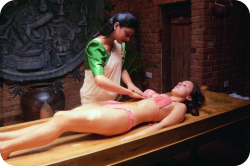
Ayurvedic massage
The Ayurvedic massage is the part of the ancient Indian medicine. This medicine is over 5000 years old and is still practised today. In India, everybody gets massaged at least once a week. Because of its benefits on the health and well-being, the Ayurvedic massage technique is used today in Western countries as well.
Ayurvedic Massage Principles
Ayurveda believes that the mind and body are linked and that the well-being of our head helps the health of our body. This type of massage is therefore designed to relieve pain, aches and any physical sufferings. It allows energy to shift focus from painful parts of our body to flow properly everywhere it’s needed in our body.
The Technique
The Ayurvedic massage is carried out either on a table or on the ground directly. The massage therapist uses mildly heated oils adjusted to the body’s temperature. The therapist alternates various movements using soft touches, but also stronger massage strokes such as deep friction and compressions on specific points. To facilitate the oil absorption, movements are generally slow. Each part of the body is massaged from head to toe. To promote a relaxation atmosphere, low volume music often accompanies the sessions.
Benefits of the Indian Ayurvedic Massage
Ayurvedic massage allows to remove the stress and tension, promotes blood circulation and a good movement of oxygen within the body and thus contributes to the elimination of toxins. It allows to fight insomnia, and by acting on the immune system, it allows to limit the development of certain diseases. -By eliminating pain and aches contributes to a better quality of life. All these benefits promote a good health and allow the patient to experience the well-being.
Thai Massage
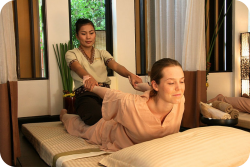 Thai massage has very ancient origins dating back to about 2500 years. It is often practiced for the purpose of true relaxation. Thai Massage named “Nuat phaen boran”, is a technique which combines massage with yoga-like positions during the course of the massage. originates in India and it has its roots on ancient Ayurveda and Yoga. It makes use of pressure points, which are called sen. Interesting that both Ayurveda and the Traditional Chinese Medicine make use of the energy centers. There are 72,000 sen in the body, of which ten are on the highest priority when it comes to doing the massage. Applying pressure on these points encourages the energy flow and restores health. Thai massage increases the circulation of blood within the body and completely eliminate the toxins that cause pain and illness to the body.
Thai massage has very ancient origins dating back to about 2500 years. It is often practiced for the purpose of true relaxation. Thai Massage named “Nuat phaen boran”, is a technique which combines massage with yoga-like positions during the course of the massage. originates in India and it has its roots on ancient Ayurveda and Yoga. It makes use of pressure points, which are called sen. Interesting that both Ayurveda and the Traditional Chinese Medicine make use of the energy centers. There are 72,000 sen in the body, of which ten are on the highest priority when it comes to doing the massage. Applying pressure on these points encourages the energy flow and restores health. Thai massage increases the circulation of blood within the body and completely eliminate the toxins that cause pain and illness to the body.
The Specifics of Thai Massage
This type of bodywork is not practised on a table, but on a mat placed directly on the ground. The practitioner uses not only his or her hands but various parts of the body such as the feet, knees or elbows to perform. The massage consists mostly of pressures on meridians and specific points similar to the acupuncture or marma points. These compression manipulations are function of the patient’s body weight. The ideal duration of this massage type varies between 1 hour 30 and 3 hours. During a Thai-massage session the entire body is massaged and not only a part.
The Main Principles of Thai Massage
Thai massage is carried out according to a precise and steady pace. The therapist is focused on the patient but relaxed at the same time. A traditional session can even include a little song, sung by the therapist, at the beginning and end of massage. Yoga-like postures are applied, active-passive range of motion are heavily used, and specific pressopuncture techniques are used. All Changes are smooth and transitions are light. The practitioner adapts to each patient. For clients with health problems, or recent surgical interventions, or any injuries, the massage therapists adapts the pressure. Joints and bones, more sensitive areas, are not direct pressure.
Another important part of the Thai massage are the stretching positions. The yoga-like positions are meant to improve the hormonal activity and increase body’s flexibility.
Thai massage is done with both the giver and the receiver of the massage fully clothed. The massage therapists don’t use any tools – only their fingers, hands, knees, legs and feet. They also use body weight to apply force and pressure to the receiver’s body. Traditionally, in a Thai massage, the subject lays down on the back on a special designed massage mat and not on a table as in many other modalities.
The benefits of Thai Massage
This massage has beneficial effects on our overall health. The whole body is stretched and it releases tension during the process. Thai massage brings relaxation, eliminates stress, allows the body recharge and stimulates blood circulation. It is mostly beneficial as a preventative measure, used by healthy people who seek to relax, but it can also have therapeutic Myotherapy is also called trigger point therapy, and is the massage modality that deals with painful spots in muscles.qualities for people with specific ailments. Think about it as the Yoga of massage.
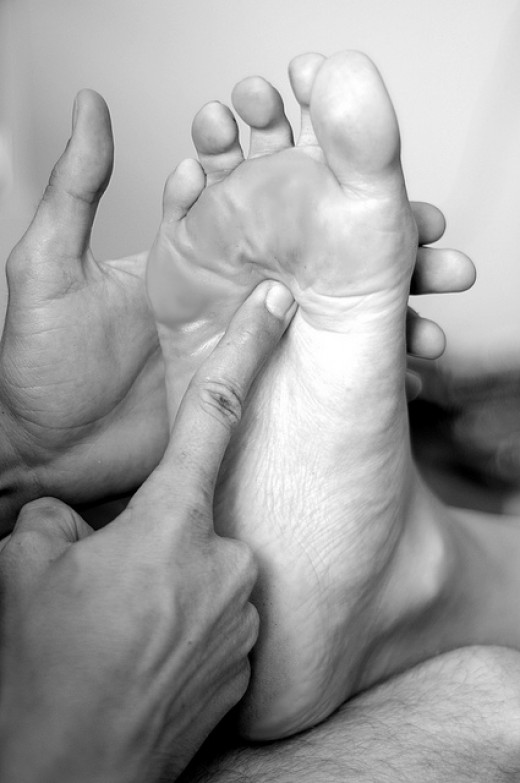 Acupressure
Acupressure
Acupressure is an ancient Chinese technique part of the Traditional Chines Medicine. Acupuncture, a very similar practice, using the same philosophical concepts is commonly used in China by traditional doctors. Today, it is widely adopted in the Western countries as part of the complementary medicine..
The Techniques of Acupressure
Acupressure is a derivative technique, very close to acupuncture, with the only difference that the energetic stimulation is obtained through finger pressure rather than needles. The stronger fingers, such as the thumb, the middle finger, or the index are used to exercise a compression on specific points on the energetic meridians. The finger presses these points, making circular motions, without moving on the skin, for 20 seconds or more. The key to the success for this massage modality, is the perfect knowledge of the energetic points’ locations.
Principles of Acupressure
The principle behind acupressure is that stimulation by compressing on specific points will trigger the modification of energy flow in those points and on the energy meridians. The idea of acupressure is that this energy needs to circulate freely and in a perfect balance throughout the body for a good health state. The Chi, (the energy), must be at the appropriate levels everywhere in our body, and the pressure points are differently manipulated in function of the desired effect – stimulation or reduction of the point.
The Benefits of Acupressure
The use of this technique takes is used to prevent or to cure an ailment or a pain or just simply for relaxation. Acupressure supports the immune system, soothes pains such as stomachache, headache, or back pain. It can relieve motion sickness, can also stop hiccups. It has great relaxing potential and can help combat stress, anxiety and insomnia. The massage using acupressure techniques can improve the client’s health state by working on both the physical and the mental levels.
Chinese massage
Chinese massage is an old therapeutic massage dating back more than 5000 years. Tui Na as it is known in Chinese is part of the ancestral techniques of the Traditional Chinese Medicine which are very popular in West now, and much appreciated today. The philosophic concept of Tui Na is based on the manipulation of Qi. Qi is the vital energy, active principle of any living being. A sick person has the balance of Qi broken, because of a poor diet, or a surplus of stress, or other reasons. Qi could be blocked, or could flow incorrectly, and the body’s health is poor.
The Specifics of Tui Na
The massage therapist starts by performing a general muscle massage. The goal at this stage is to relax the patient. Then, the specific of the Chinese massage is to exert specific pressure manipulations on pressopuncture points targeting the patient’s needs. The objective is to release areas of tension and stimulate the flow of energy. A typical Tui Na session will also comprise range of motion, traction and the use of herb extracts.
The Benefits of Tui Na
The effects of this massage modality on health are numerous:
- alleviates the muscles and joints pains and aches
- it also contributes to the vitality and well-being of the massaged person
- the client feels relieved
- revitalizes and fully reinvigorates the patient
Lomi-Lomi or Hawaiian massage
Hawaiian massage, also known as Lomi-Lomi is originally from Polynesia. Lomi-Lomi literally means massage in Hawaiian. It is is meant to provide the patient a maximum well-being.
Principles of Lomi-Lomi
It occurs in a calm atmosphere. The masseur begins by establishing a climate of trust between him and the patient to be in perfect harmony with it. In some cases, he recites a prayer before starting. The person to be massaged must feel a total welfare on both the physical level and the mental level. The session lasts between one and two hours and is considered completed when the patient is completely relaxed.
Specific Characteristics of Hawaiian Massagesave
During a massage session, the Lomi-Lomi practitioner makes use of his fingers, forearms, elbows, knees and sometimes even the feet. The patient is lying on a table and the practitioner generally uses a specific oil, which will be warmed before use. The massage therapist will stroke with his hands by by using long movements, and perform pressure and compressions with his palms, elbows, forearms, and feet. The movements are fluid, and a stroke can go from toes to neck. Different parts of the body may be worked at the same time. The bodywork is done on certain points determined by patient’s tensions, aches, and pain. The purpose of Hawaiian massage is not only to heal, but also to reestablish the balance in the patient’s body and mind.
Benefits of Lomi-Lomi Massage
This massage techniques has beneficial effects on the general health and well being.
- It reduces stress and mental tension
- It reduces muscle tension and can relieve pain and aches.
- It improves blood and lymph circulation.
- The body and mind feel in harmony which bring a state of well-being.
- It may be also used for prenatal care or during childbirth or even in the postpartum period.
As a conclusion, even if Lomi-Lomi’s primary purpose is not to treat, its soothing action contributes to a better health.
Bodywork Techniques – Shiatsu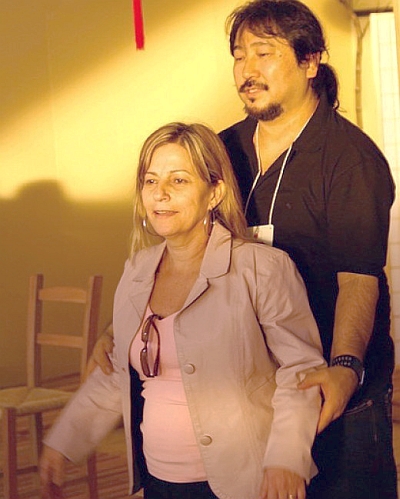
Shiatsu, translated by “finger pressure”, (shi meaning finger, and atsu meaning pressure) is a Japanese massage technique. Shiatsu is practiced without oil, and with the patient wearing light clothing. It is a technique that uses the pressure of the fingers, elbows, and knees or even feet on points along the acupuncture meridians. Shiatsu names the energy meridians – tsubos. This massage type provides both a physical and a mind relaxation. Shiatsu has great therapeutic virtues by promoting blood circulation, the elimination of toxins, and restoring the natural energy flow.
The origins of Shiatsu
Shiatsu is part of the family of bodywork, health and comfort disciplines that was practiced, under different names, for millennia in China and India. However, it is in Japan that this technique was refined and developed. Mentioned as a bodywork practice as early as the 17th century, its practice was initially reserved for blind people. With the introduction of Western medicine, it lost interest. It resurfaced in the early 20th century, and the Japanese Ministry of health officially recognized it in 1957.
A regular Session of Shiatsu
A shiatsu session lasts about an hour and the patient lays in a horizontal position. The theory is simple: promote the free flow of energy in the patient’s body. To this end, different techniques are available for the therapist. The use of finger and palm pressure on specific acupuncture points, the use of knees or elbows to reinforce the pressure are the most common procedures. The shiatsu massage therapist can also perform stretching on the limbs or any body part that can be stretched. Traditionally, there seems to be very little contraindications to the practice of this massage technique. However, the modern shiatsu applies the same general contraindications for massage.
Benefits
The benefits of shiatsu range from a feeling of well-being, with stress and tension elimination, to the relief of specific disorders. Shiatsu is the most effective in the field of Rheumatology, respiratory or digestive system. The release or activation of certain points allows to strengthen the immune system and keep you healthy and in good physical shape. Muscle pain, nausea, anxiety, and depression are known to be alleviated through shiatsu massage.
Myotherapy or Trigger Point Therapy
Myotherapy is the massage therapy that treats the dysfunctions caused by trigger points.
Myotherapy is specifically created to treat the source of the pain. The techniques in the trigger point therapy involve performing sequential sets of isolated pressure and release. The trigger points are pressed for a few seconds, using fingers, elbows or knuckles, causing the muscle to relax. The patient has to actively participate by deep breathing under the therapist supervision. This combined with the practitioner’s routine helps the elimination of toxins in the muscles and the release of endorphins. A significant decrease in pain is often found after just one treatment. This in turn will allow other muscles in the area to get in a correct position, relieving the pain. One interesting thing is that, treating a trigger point can alleviate a malfunction of an internal organ such as the liver, or the stomach. A trigger point might be, sometimes, the signal that an internal organ is not functioning well.
The Techniques During a Myotherapy Session
After the initial assessment, the session will start with light effleurage and friction. This has two objectives, to warm up the muscles and to further asses the muscles’ state. After the tissues are warmed up, the session continues with deep compressions on the trigger points, thermal therapy and cryotherapy, dry needling, (acupuncture needles), cupping and stretching.
Benefits of Myotherapy
Any myo-fascial, (muscles and fascia), problems, related to muscle contractures. These problems can include the following conditions: injuries, bad posture, vertebral column problems, tendonitis, compressed nerves, (finger or hand numbness, or tingling), posture after pregnancy and nursing, arthritis, etc…
Esalen Massage
Esalen massage as a bodywork technique is not very different from a Swedish massage session, from the technique point of view. However, the Esalen Institute prides with their unique integrative approach of massage, putting emphasis on the connection body-mind-therapist. The therapist in this case is merely a guide, who helps the client to deeply relax and to tap into his/her own unexplored potential.
Esalen massage sessions are unique because your clients are unique, and they respond differently to the various stimuli. They also have their unique muscular, emotional or physiological needs. But the foundation of Esalen is the relaxation as the ultimate healing instrument.
The Techniques of Esalen Massage
The specific techniques of Esalen massage have their roots in many other modalities and philosophies. Some of the techniques are from Rolfing, Tragger therapy, Craniosacral, Swedish, or Feldenkrais. Many concepts are inspired by the Oriental traditional medicine, Yoga, meditation, tai-chi and others and unified into a single model.
Reflexology
Reflexology is a type of massage that focuses almost exclusively on the hands and feet.
It uses targeted points on the body’s extremities to send signals to the brain and balance the nervous system. A reflexology practitioner stretches and moves the hands and feet, using static or moving compressions, on areas that trigger reflexes on specific organs and other parts of the body. The brain is stimulated, and it “acknowledges” the stimulated area, and tries to restore the body balance. Endorphins are released throughout the entire body, reducing stress and returning the body to balance.
Reflexology is very effective in providing relief from headaches, digestive issues and back pain. Very often the therapist can say what organ is affected by the signs on the patient’s hands and feet. This signs can be painful spots, swollen areas or irritated portions. A particular case of reflexotherapy is the auriculotherapy which uses the patients ears as point of focus.
Deep Tissue Massage
Deep tissue massage is a technique very similar to Swedish massage but is used to target knots and release chronic muscle tension.
Deep tissue massage is designed to act on the deeper layers of tissue, by using more intense techniques, with a lot of deep slow motion or static compressions. It is very common for a deep tissue massage patient to get after-massage soreness that lasts for a few days. The final result though is a faster, complete tissue healing, and full muscle relaxation and pain relief. It is a very effective way to replace the physical activity or recover after intense physical activity. It involves a consistent physical effort from the therapist’s part.
Other deep tissue benefits include reducing inflammation and helping to eliminate scar tissue. The focus is on the deepest layers of muscle tissue, tendons, and fascia (the protective layer surrounding muscles, bones and joints).
Craniosacral Therapy
Craniosacral therapy is a gentle form of alternative medicine that deals with the health of the skull and spine.
Craniosacral therapists apply subtle movements of the spinal and cranial bones in attempt to correct their position. The misalignment of these bones, ease the movement of the cerebrospinal fluid by reopening the obstructed passages. Cranial sacral therapy is thought to eliminate the negative effects of stress as well as provide relief from migraine headaches, neck and back pain, and more.
There is a lot of reflexotherapy involved in a craniosacral therapy. The simple touch of the patient’s head will help him to relax and will help the brain enter different states. The realignment of the spine is a strong tool that will help the patient regain his vital energy. Realigning the skull bones can alleviate headaches and other conditions that are affected by unnatural pressure on brain.
